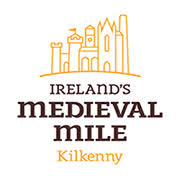Recently in Belgium, the grave of Patrick Sarsfield was located due to the intervention of Dr. Loïc Guyon, the honorary consul of France in Limerick.
Patrick Sarsfield was fatally injured at the Battle of Landen (or Lindon) on July 29th 1693 while in the service of King Louis XIV of France. He was taken to the town of Huy around 30km south of Liege. There he was treated for his wounds and died a few days later. He was buried on the grounds of St. Martins Church in the town of Huy according to historical accounts of the time in an unmarked grave or without a gravestone.
The church recorded that there were 20 burials in the church grounds from 1689 to 1795, 10 of these are listed as French officers, eight are identified burials and two remain anonymous. It is though that one of these two unknown graves contain the remains of Patrick Sarsfield.
It is believed that the body maybe positively identified by genetic analysis from some of Sarsfield’s surviving descendants and also the fact that he was usually tall for his time , well over six feet which would have been unusual in his day.
The hope is that his remains may be returned to Ireland, to Limerick or Lucan where Sarsfield was originally from.
Interestingly Patrick Sarsfield and the town of Huy both have two connections to Kilkenny Castle.
Patrick Sarsfield was married to Honora Burke, the daughter of William, 7th Earl of Clanricarde and his second wife Helen McCarthy, daughter of the Earl of Clancarthy. The Clanricards lived in Portumna Castle on the Connaught side of the Shannon, which today is an OPW heritage site and open to the public. It was recorded that young Lady Honora and her brother Lord Galway were both involved in recruiting and the training of the soldiers based at Portumna Castle. Despite their differences in ages, Sarsfield and Honora were married probably at Portuma in 1689 when she would have been around 15 years of age.
Two portraits today survive of Honora Burke; one is located in the collection of the Duke of Alba and attributed to Sir Godfrey Kneller. The second is located in the Tapestry Room in Kilkenny Castle. A full-length portrait was recorded at Portumna Castle before 1826, and then in the collection of Harewood House, Yorkshire, from where it was sold in 1953.
The portrait in Kilkenny Castle is an oval portrait, 46 x 51 cm, depicting Honora in a yellow dress with a blue ermine-trimmed wrap. It came into Kilkenny Castle as part of the collection of paintings left to Walter Butler (1703 -83) who succeeded as de jure 15th Earl of Ormond. The paintings had originally been in the possession of Frances Butler, his mother.
Patrick Sarsfield (1655-1693) the 1st Earl of Lucan served with James Scott, the Duke of Monmouth from 1672 to 1674 in the Anglo-Dutch Wars. Later with the accenssion of James II as King in 1685, he defended the crown during the Monmouth rebellion. He became leader of the ‘War Party’ in 1690 and was awarded the title Earl of Lucan. After the defeat of the Jacobites at Aughrim, he negotiated the Treaty of Limerick and led thousands of Irish soldiers into what became known as the ‘Flight of the Wild Geese’. Many of these including himself were to serve during the Nine Years War.
The Battle of Landen (or Neerwinden, as it is sometimes called) was fought in July 1693. At the head of a French cavalry regiment Patrick Sarsfield was stuck in the chest and fell from his horse. As he lay on the ground he is said to have put his hand on the wound and said; “Would to God that this was for Ireland” An eyewitness Gerald O’Connor left an account of his last moments and to those Irish who in later years pondered the ‘War of the Three Kings’ he was in the word of Thomas Moore, ‘The Last of the Brave’.
After his death, there is an account of Honora Burke written by Eugene Davis in a work entitled Irish Footprints on the Continent. Davis claimed to have visited Honora at Huy shortly after the death of her husband. He wrote:
‘She was still very young, and even girlish in her manners, despite her widow’s weeds, and was remarkably prepossessing in appearance. Her own relatives as well as those of her late husband had completely abandoned her and she was almost in complete poverty in Huy. Berwick’s heart grew full of pity for the desolate widow, and, pity is a kin to love in such cases, he became soon became so enamoured that her offered her his hand, which was graciously accepted’.
The ‘Berwick’ mentioned in the text is the James FitzJames the Duke of Berwick the son of James II of England and Arabella Churchill the sister of the Duke of Marlborough. He married the young 19 year old widow against his father’s (James II) wishes, he viewed that Berwick should have married French nobility. She also married against her father’s wishes and they were wed at Chapel Royal in St-Germain-en-Laye. Berwick raised Sarsfield’s child as his own, James Sarsfield 2nd Earl of Lucan who died childless in 1719. They were have their own son, James Francis FitzJames Stuart who became the Second Duke of Berwick and went onto found his own family dynasty in Spain, which still survives today.
Tragically Honora was to die herself shortly after at the young age of nearly 23 years old at Pesenas, in the Langue d’Oc. It was reported that Berwick was so grief stricken after her death that he had her heart preserved in a silver box that he kept with him.
Coincidentally many centuries later another connection was develop between the town of Huy and Kilkenny Castle.
Lady Moyra Butler (2 Dec. 1920 – 26 May 1959) was the daughter of James George Anson Butler, 5th Marquess and 23rd Earl of Ormond and The Honourable Sybil Fellowes. She was one of the last members of the family to reside in Kilkenny Castle.
Lady Moyra was considered a great beauty of her time and was presented at Court in 1938. He parents hosted a large ball in London in June 1938 jointly as a ‘coming-out’ party for Lady Moyra and a ‘coming of age’ party for her brother Anthony Viscount Thurles. The guest list included the great and the good of the period including, the Duke and Duchess of Marlborough, the Earl and Countess of Shrewsbury and the American Ambassador Joseph Kennedy and his daughter Kathleen.
In 1940, Lady Moyra was to marry Lt. Charles Weld-Forester, Winston and Clementine Churchill were among the guests invited. In a terrible tragedy just eight days after her wedding, her brother Anthony passed away. Her husband was captured in the Second World War and Moyra became the only female transport driver attached to the British Red Cross as a volunteer.
After the war, the couple divorced and Lady Moyra remarried Count Guy van den Steen in Chelsea in 1948. The couple moved to the Count’s ancestral home Chateau de Jehay that is located near the town of Huy. The couple restored the chateau, which was in a neglected state and the grounds surrounding chateau.
Lady Moyra as an heiress to the Butler Family heirlooms acquired many paintings, pieces of antique furniture and other objects, which originally would have been in the collection in Kilkenny Castle. Lady Moyra died at Chateau de Jehay on May 26th 1959 at the very young age of just 38 years. Count van den Steen sold the Chateau and its collections in 1978 for a life annuity to the Province of Liege and he was to pass away in December 1999. The items from Kilkenny Castle are now proudly displayed to the public in the Chateau de Jehay.
Francois de Gand-Vilian van den Steen acquired most of the Chateau de Jehay in 1680; it is very tempting to speculate that he could have met Patrick Sarsfield or his wife Honora Burke during after the events of the Battle of Landen?
Peter Kenny



